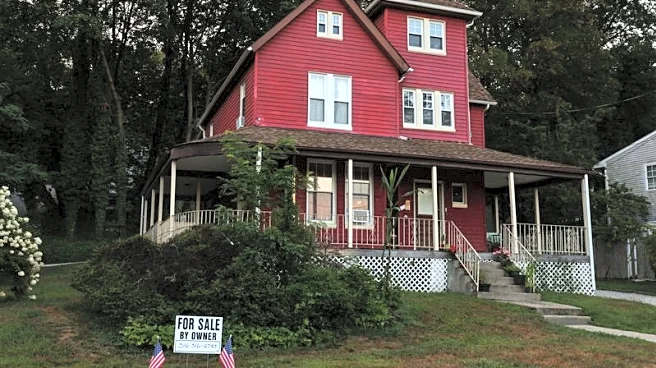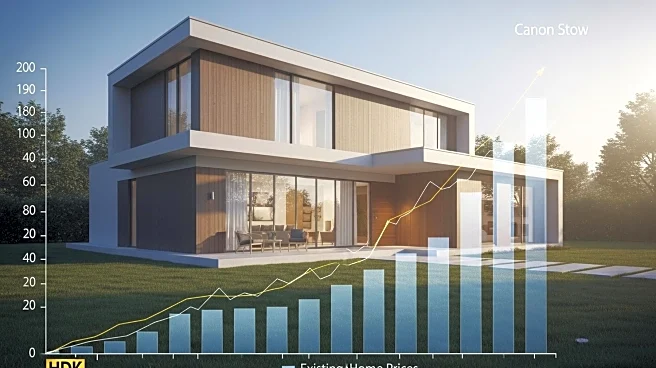What is the story about?
What's Happening?
The real estate market in Delaware is experiencing mixed trends as home sales and prices fluctuate amid changing mortgage rates. According to the Delaware Association of Realtors, the median sold price for existing homes decreased from $405,996 in June to $386,783 in August, although this remains slightly higher than the previous year. Homes are taking longer to sell, with the average market time increasing from 38.33 days in June to 43.3 days in August. Active inventory rose by 16.79% compared to last year, but new listings decreased by 6.85%. Despite the Federal Reserve's recent interest rate cut, mortgage rates have risen, impacting buyer activity. The National Association of Home Builders reports that builders are cutting prices, hoping that lower mortgage rates will spur sales.
Why It's Important?
The fluctuations in home sales and prices in Delaware reflect broader national trends influenced by mortgage rates and economic conditions. Rising mortgage rates, despite Federal Reserve cuts, could deter potential buyers, affecting the housing market's recovery. The increase in active inventory suggests more options for buyers, but the decrease in new listings indicates potential supply constraints. The real estate market's performance is crucial for economic stability, impacting construction jobs, consumer spending, and local economies. Lower property taxes and coastal lifestyle continue to attract out-of-state buyers, highlighting Delaware's appeal as a retirement and investment destination.
What's Next?
The future of Delaware's real estate market will depend on mortgage rate trends and economic conditions. If mortgage rates ease, buyer activity could increase, potentially boosting sales of both new and existing homes. Builders remain optimistic that favorable interest rates could attract hesitant buyers. The National Association of Realtors suggests that a decline in average mortgage rates could lead to more renters becoming first-time homeowners. Stakeholders will closely monitor Federal Reserve actions and economic indicators to anticipate market shifts.
Beyond the Headlines
The real estate market's dynamics in Delaware may have broader implications for housing affordability and regional migration patterns. As buyers from neighboring states seek lower property taxes and coastal living, Delaware's demographic landscape could shift, influencing local infrastructure and community services. The interplay between mortgage rates and home sales underscores the complex relationship between monetary policy and consumer behavior, highlighting the need for strategic planning by real estate professionals and policymakers.
AI Generated Content
Do you find this article useful?















